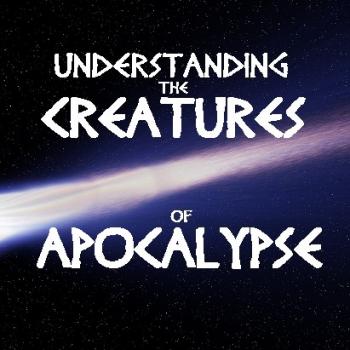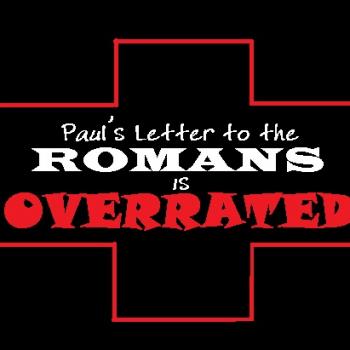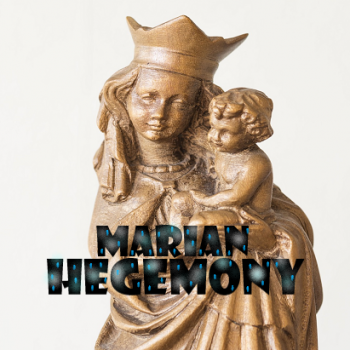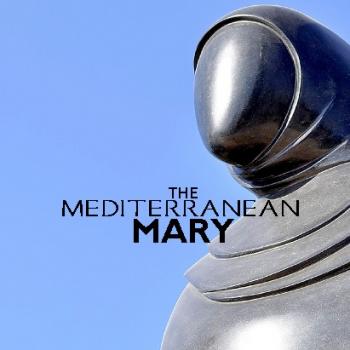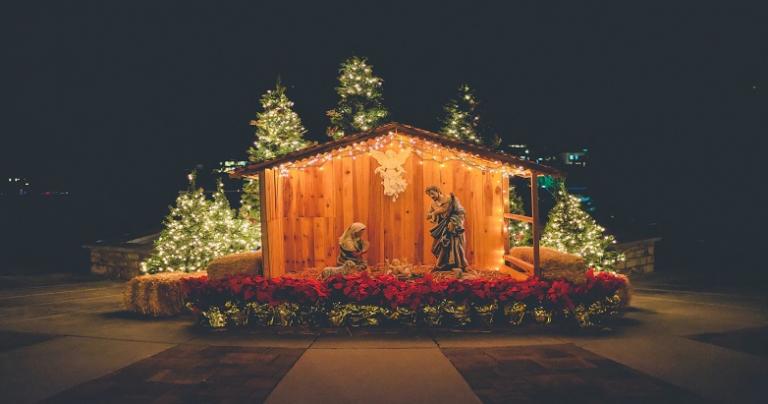
Manger scene messiness—learn to know from which Gospel the different elements come.
As we have been discussing, we American Christians are so obsessed with facts. We regularly fail to distinguish truth and facts. Modern Western culture is unique in that it identifies truth with factuality. How do we check our obsessions when it comes to our Christmas devotions and observances? For example, how does all this affect how we view our Manger Scenes?
Last time we explained that Stage Three of Gospel Formation is the most important. This is because here we encounter the perspectives of the particular Evangelist and Jesus Group (e.g., Matthean or Lukan). For Christian faith, these inspired insights are paramount.
The Manger—Theological Portrait, not Historical Photograph
We cannot afford to forget that the Gospels are theological portraits, and not modern Western histories or biographies. Although they offer us some scant historical data, the Infancy Narratives of “Matthew” and “Luke” are more concerned with demonstrating the importance of the messiah, Jesus.
But many Christians are deaf and blind to the distinctive theological perspectives of “Matthew” and “Luke.” This is because of an accumulated emotional and sentimental freight carried by an annual boilerplate of Christmas devotions and observances. These blend the different stories’ elements together with later Christian legends. The result is that the particular voices of “Matthew” and “Luke” cannot be heard.
Do not assume that “Matthew” wrote his Gospel thinking that “Luke” would fill in details he leaves out. The Gospels are not a patchwork of jigsaw pieces to be fitted together narratively, “Voltron-style.” But that is precisely how many have treated them through the ages.
Let’s examine a typical Manger Scene. What parts of the Manger Scene belong to “Luke”? And what parts of the Manger Scene belong to “Matthew”? Beyond that, what elements of the Manger Scene belong to later traditions and legends?
The Manger Itself
This is a Lukan detail strained through centuries of legends and recontextualizations. The original meaning of “Luke” has been lost. Jesus being born in a manger is not really an extraordinary detail. This was the usual birthplace for a Galilean peasant.
Part of the confusion lies in mistranslation of Luke 2:1-7. Although an Innkeeper is a must for all Christmas pageants, there really is no “innkeeper” (or “inn” for that matter) in this story! The Greek word, καταλύματι, rendered wrongly as “inn,” probably means “guest room.” “Luke” employs this same Greek word to refer to the place of the Last Supper (22:11). But he used a completely different word—πανδοχεῖον—in reference to a real inn (10:34).
In the world of the Bible, inns are nasty, dirty places. Their occupants, travelers, were detested as social deviants. For Israelites, they were unclean places, and peasants could hardly afford to stay in one, much less desire a room.
What “Luke” is likely communicating is that Joseph and Mary were staying with extended kin in Bethlehem. But the guest room was already occupied by other kin who socially outranked the Holy Family. Peasant homes usually were one big room (see Matthew 5:15 where a lamp lights the whole house). Sometimes, a furnished guest room was attached. One end of the main room was occupied by a peasant family (usually a raised, “upper room”), and the animals were at the other end. Between these was the manger, the ordinary place for peasant births.
Star over the Manger
The famous Christmas star is a Matthean detail and invention. As scholar Raymond Brown has handsomely demonstrated, no other ancient astronomic record records this happening. The “star” described in Matthew 2:9, moving in the westward sky, is a comet, a terrifying portent to all ancient peoples. What direction it traveled in determined its meaning.
Pliny the Elder describes political calamities linked to such a “star” (Natural History 2, 23). Says Pliny, “Sometimes there is a comet in the western sky, usually a terrifying star and not easily explained…” One could see why Herod the Great would be worried by this astral phenomenon! But note that this account of the comet and Herod’s desperate and evil murders of infants are unique to “Matthew.” It is found nowhere else, not in “Luke,” and not in any other ancient literature! Why do you think that is?
All astronomic phenomena including stars, constellations, planets, and comets were considered by biblical people to be other-than-human-persons. This “star” over Bethlehem is a who, not a what. It is one of God’s angelic sky servants. Remember that when dressing your manger scene and Christmas tree.
Shepherds at the Manger
These unnamed men are a Lukan detail (Luke 2:8-20) mixed together in our confused manger scenes, recontextualized again and again with centuries of legends. By about 900 CE, three of these shepherds had been given names by Byzantine churches in Cappadocia—Sator, Arepo, and Teneton.
But the 13th century Nestorian Book of the Bee lists seven shepherds, naming them Asher, Zebulon, Justis, Nicodemus, Joseph, Barshabba, and Jose. By the 15th century French sources listed the shepherds as two women, named Mahault and Alison, and four men, named Aloris, Ysanber, Gobin le Gay, and le beau Roger.
Whatever their names and numbers, they are found only in the Lukan Infancy Narrative. Shepherds were despised figures in first century Galilee. They were away at night with flocks, not protecting their women. They would allow their sheep to graze in the fields of sleeping peasants. When the Johannine Jesus referred to himself as “the Good Shepherd,” that was a lot like saying “the Good Used Car Salesman.”
Three Kings Visit the Manger
“Matthew” does not have any kings visiting the young Jesus, but rather magi (Matthew 2:1-12). They have three gifts, all varieties of incense. This three-fold incense has been recontexualized, augmented through legend, and confused as three different things (gold, frankincense, and myrrh). Their presence causes uproar and panic in Jerusalem—is “Matthew” describing a retinue of thousands? Their number is not given in “Matthew,” but legend has counted them, from the gifts they bear, at three.
The unnumbered Matthean Magi remain anonymous in that Gospel. But our later-evolved Christmastime “Three Kings” are famous, and named by Western Christians as Caspar, Melchior, and Balthasar. But don’t tell that to Syriac Christians who count the magi at twelve! Who is right? Who is wrong? (I once heard a Latin rite Catholic priest give a homily ludicrously claiming that we have “scientific proof” that there were three magi).
Even though magi probably didn’t visit the historical Jesus, it is possible that historical memory helped “Matthew” create this story. In 66 CE, Emperor Nero was visited by the newly crowned Armenian King. In that king’s company were three companions referred to as “magi.” One account of their departure from Rome notes that they “did not return by the route followed in coming” (cf. Matthew 2:12).
Could it be that sometime in the 80s, “Matthew” reworked this incident into his Infancy Narrative? Was “Matthew” asserting that Jesus was the authentic king of the Judeans, and not Ceasar?
Holy Family in the Manger and More
As we move forward with these studies we will give some time to Joseph, Mary, and Jesus. In fact, in our next post we will be exploring if Mary’s and Joseph’s reminiscences gave rise to Matthew 1—2 and Luke 1—2.



